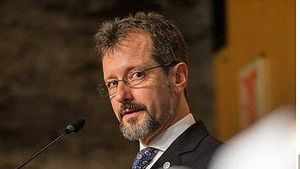JAKARTA GHGSat, a commercial greenhouse gas monitoring company, launched the satellite on Saturday, November 11. The carbon dioxide emission detection satellite is named Vanguard.
This satellite is specially designed to observe emissions from certain facilities such as coal-fired power plants and steel plants from space. The observed emission is carbon dioxide, but is based on methane networks.
To obtain emission data, Vanguard will build a satellite network that has detected methane clumps, one of which is home gas that is colorless, odorless, and visible.
Usually, methane gas is difficult to detect and leak from various places such as pipeline networks, drilling sites, and farms. From the basis of this methane detection, Vanguard is expected to be able to monitor carbon dioxide.
Carbon dioxide emissions accounted for 80 percent of total greenhouse gases in the United States. So far, the largest contributor to carbon emissions comes from large industries such as power plants.
SEE ALSO:
With the launch of Vanguard, the collected data will help monitor and measure the carbon dioxide emissions carried out by many parties in order to suppress the release of emission gas.
"Often what we find is a combination of measurements and live estimates. Therefore, direct measurements of all facilities from satellites will act as validation," said GHGSat CEO Stephane Germain, quoted by Reuters.
The plan is that data from the Vanguard satellite will be collected and stored by GHGSat. Later, these data will be sold to industries that want to know the total emissions they, the government, and scientists.
The English, Chinese, Japanese, Arabic, and French versions are automatically generated by the AI. So there may still be inaccuracies in translating, please always see Indonesian as our main language. (system supported by DigitalSiber.id)

















